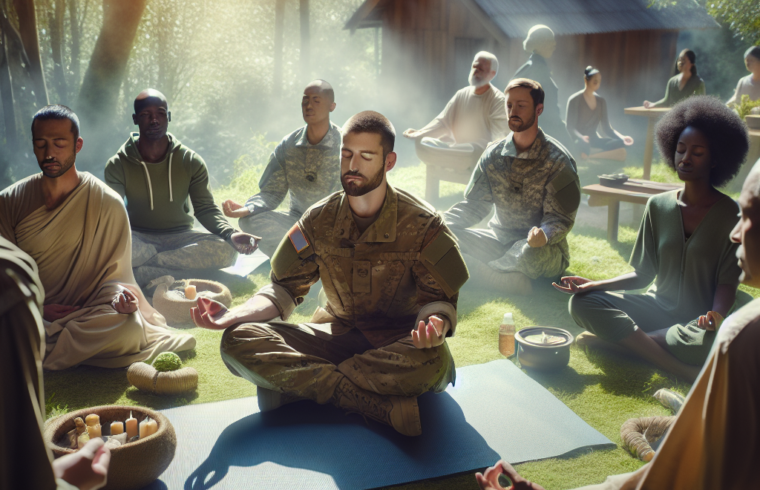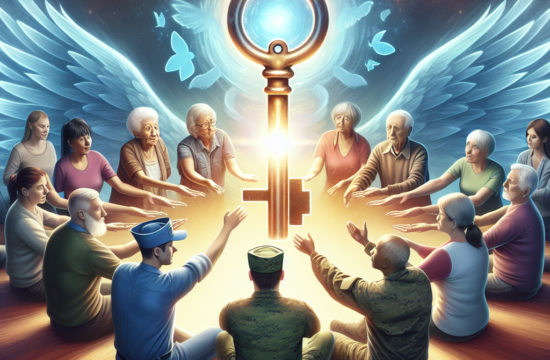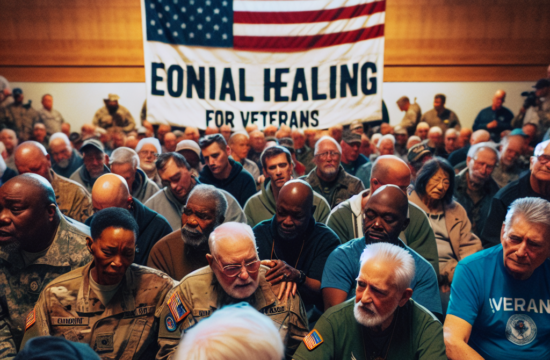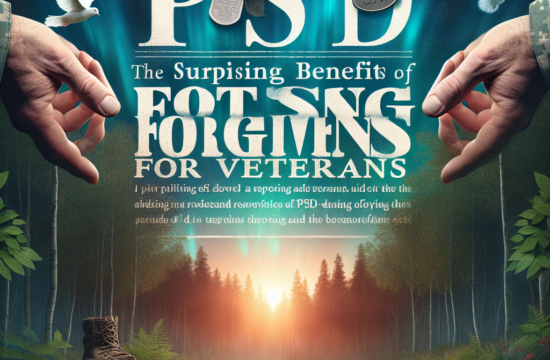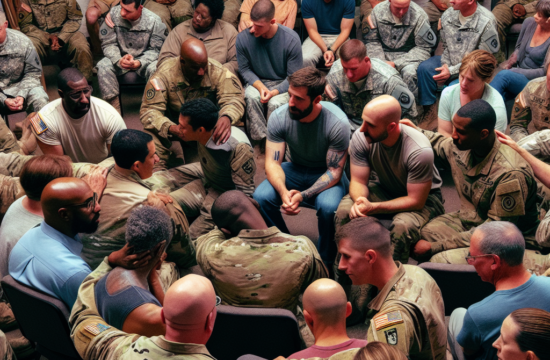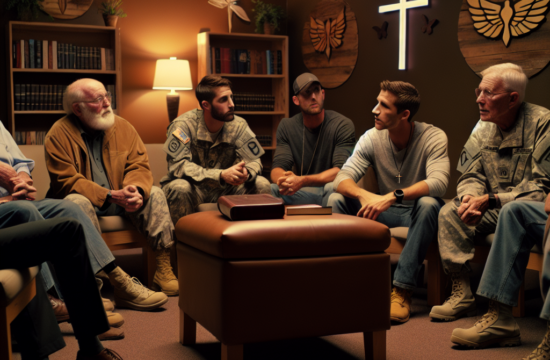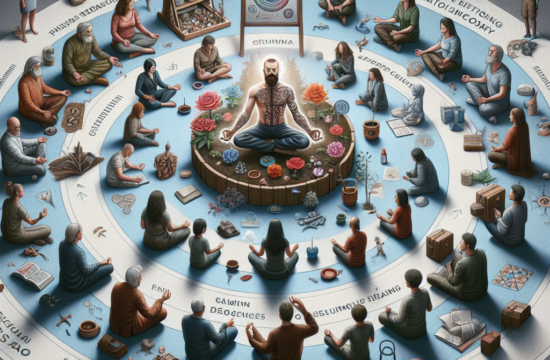==> Thank you for reading this post! Click Here If you are looking for support and Victory over PTSD.
Recognizing the Impact of Combat Experience
Understanding Trauma
It’s pretty common for veterans to return home after serving and feel a weight that just wasn’t there before. When we talk about trauma, it’s important to recognize that every individual experiences it differently. For me, it often feels like I’m carrying a backpack full of stones—each one a memory of something that happened while deployed. Understanding that is the first step toward healing.
Trauma can manifest in different ways—like flashbacks, anxiety, or even anger. It’s crucial to recognize these feelings as real and valid responses to intense situations. By allowing ourselves to acknowledge our traumatic experiences, we can begin to navigate this emotional turbulence in a more constructive way.
I found that talking openly about my experiences with fellow veterans created a sense of community. Sharing these moments helped lift some of that burden. Sometimes just knowing you’re not alone in your feelings makes a massive difference.
Emotional Readiness
Emotional readiness is another key part of this journey. I realized that I needed to be at a place where I could accept my feelings and allow myself to heal. It’s not easy to confront past experiences, but this readiness can signify the start of recovery. It’s kind of like standing at the edge of a pool, feeling the cool water before jumping in—your heart races, but you know that it’s time.
Taking a tiny step forward, like journaling or speaking to a trusted friend, can help gauge readiness. For me, starting with small conversations gradually opened up a floodgate of emotions I didn’t even know needed addressing.
Each small moment of emotional honesty contributes to the broader journey. I found that being gentle with myself—recognizing my own pace in processing these experiences—was a big part of acceptance and readiness.
The Importance of Support Systems
Having a solid support system is foundational in the healing process. Stepping out of the shadows of combat experience can be terrifying without a circle of trusted individuals to lean on. Personally, I can’t stress how effective support from friends, family, and fellow veterans has been in my healing journey.
Connecting with others who have walked similar paths helped me feel seen and supported. Joining a veterans’ group allowed me to find those relationships. We could share laughter, tears, and everything in between. That space nurtured healing and instilled hope.
It’s also vital to recognize the value in professional support—therapists and counselors can offer tools and strategies that typically help in processing trauma. Support isn’t one-dimensional—it’s a collection of voices that guide you through healing.
Setting the Path Towards Healing
Finding Personal Motivation
The journey of inner healing begins with finding my “why.” What motivated me to pursue healing was reflecting on the small moments of joy in life—time spent with loved ones, hobbies I loved, and the simple pleasures of day-to-day existence. Focusing on these moments helped me push through the tougher aspects of healing.
Motivation can be driven by various factors, whether it’s the desire for personal peace, seeking deeper connections, or hoping to regain control over one’s life. I found that identifying what mattered most to me spurred me to take actionable steps toward healing.
When I embraced my “why,” it became a guiding star in the midst of turmoil. Keeping that in mind reminded me that I was pursuing a healthier version of myself, rather than dwelling on the past.
Creating a Safe Space
Creating a safe space for myself was another pivotal step in my journey. This meant finding a physical and emotional environment where I felt secure and free to express my thoughts and feelings. For me, this sometimes looked like a cozy corner in my living room or a quiet spot outdoors.
Next, I invested time in routines that made me feel grounded. Whether it was practicing mindfulness, meditating, or even engaging in a craft, establishing those practices helped in anchoring my spirit. A safe space doesn’t just need to be physical; it can also be emotional and mental.
It was within this safe space that I could reflect on my experiences, allowing myself to heal at my pace. I found that every moment spent honoring my feelings in a safe place contributed to a stronger foundation as I moved forward.
Practicing Forgiveness
Forgiveness, especially self-forgiveness, played a massive role in my healing journey. Initially, I held onto guilt and regret over things outside of my control. Realizing that these feelings were only weighing me down helped me seek forgiveness—not just from others, but for myself as well.
I found it helpful to write letters—some to those I felt needed forgiveness, and others I addressed to myself. It was freeing to express those emotions out loud, allowing space for healing. Learning to forgive myself of perceived past mistakes transformed my mental landscape significantly.
Practicing forgiveness took time. I learned that it’s a gradual process. Each day provided a new opportunity to let go of negativity and strive toward compassion for myself and others.
Integrating New Coping Strategies
Exploring Therapies and Modalities
One of the most impactful aspects of my healing has been discovering various therapeutic modalities. Whether it’s talk therapy, art therapy, or even yoga, finding what resonates with me has been part of the journey. Each approach offered a different lens through which to view my experiences.
Trying new therapies can feel a little overwhelming, but I always encourage my friends to give things a shot. For me, art therapy became a creative outlet that allowed me to express emotions I didn’t even know were bubbling beneath the surface.
Engaging in different therapies helped diversify my toolkit for coping, reinforcing the notion that there are many ways to heal. I learned that no single method fits all; it’s about finding what works best for you.
Get Support and Help with Recovery! Visit us for more Information and Support
Establishing Healthy Routines
Establishing routines was crucial in weaving new life-affirming patterns into my daily setup. I started small—maybe a morning walk or practicing gratitude. From there, I slowly incorporated other elements like exercise and mindfulness meditation.
Healthy routines provide needed structure amidst chaos. I found grounding in these habits, creating a sense of control over my daily life. Whether connecting with nature or focusing on physical well-being, these practices can improve both physical and mental health.
Every change I made, no matter how minor, chipped away at the burdens I carried and helped foster resilience. I learned that routine could become a path to liberation rather than rigidity.
Maintaining Emotional Wellness
Maintaining emotional wellness is like watering a plant—it requires care and attention to keep flourishing. I’ve learned that regularly assessing my mental and emotional state allows me to make necessary adjustments along the way. Noticing when I need a break or to engage in self-care has been vital for me.
Journaling became a fantastic tool for tracking my feelings. It’s essential for identifying patterns or triggers that impact my emotional wellness. By documenting my struggles, I noticed trends that helped me understand myself better.
Connecting with others on similar journeys also provided ongoing support. By maintaining emotional wellness, I’ve begun cultivating a more profound sense of peace and happiness in my life.
Embracing Life Beyond Trauma
Creating New Goals
Stepping into a brighter future means setting new goals. I had to ask myself, “What do I hope to achieve moving forward?” Crafting personal goals—be it pursuing new hobbies, education, or relationships—has reinvigorated my life with purpose.
It’s about envisioning the life I want, regardless of past traumas. Setting achievable, bite-sized goals motivated me to keep pushing forward. Celebrating those little victories—no matter how small—helped foster a mindset focused on growth.
Knowing that I was transitioning into a new chapter motivated me to embrace the changes. Each new goal represented a step further from my past, paving the way for a future full of possibilities.
Building Resilience
Building resilience has been a profound part of my journey. It’s about understanding that setbacks are often just setups for comebacks. Every obstacle I’ve faced has acted as a layer contributing to my strength and tenacity.
Learning to bounce back from difficult situations, I remind myself that resilience isn’t about avoiding challenges but rather facing them head-on. Embracing vulnerability and sharing my struggles with others has been incredibly empowering. It fosters deeper connections and builds a sense of community.
Each day, I strive to discover my inner resilience. As I reflect on past challenges, I realize that each one has shaped me into who I am today—stronger, wiser, and ready for whatever life throws at me.
Celebrating Progress
Celebrating progress is often overlooked but deservedly important! It can be easy to focus solely on the destinations we want to reach, but taking time to acknowledge how far we’ve come is essential. I’ve learned to celebrate each milestone along the way, no matter how small.
Engaging in small acts of self-kindness or treating myself to something special after reaching a goal has made the process more rewarding. It encourages ongoing motivation and reinforces the positive changes I’m making in my life.
We need to be our cheerleaders sometimes! Each moment spent celebrating progress, no matter how insignificant it might seem, nourishes the spirit and propels the healing journey forward.
Frequently Asked Questions
What is inner healing for combat veterans?
Inner healing for combat veterans is a process of addressing and recovering from the emotional and psychological impacts of military service. This can involve understanding trauma, practicing self-care, and developing coping mechanisms through support systems and therapies.
How can veterans start their healing journey?
Veterans can start by recognizing their emotions and experiences as valid. Connecting with other veterans and seeking professional support can provide a foundation for beginning their healing journey.
Why is emotional readiness important?
Emotional readiness is vital as it signifies a veteran’s willingness to confront and process their experiences. This readiness allows for a more profound commitment to the healing process.
What role does support play in healing?
Support systems are crucial in healing as they provide encouragement, understanding, and shared experiences, which can foster a sense of belonging and reduce feelings of isolation.
How can I maintain emotional wellness as a veteran?
Maintaining emotional wellness involves regular self-reflection, practicing self-care routines, and seeking therapeutic support when necessary. It’s about establishing healthy habits that promote overall well-being.

